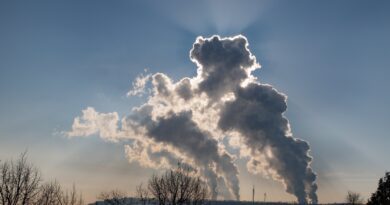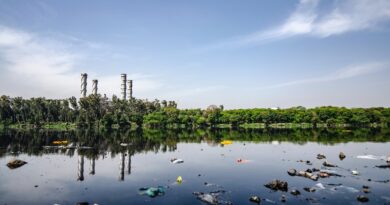Global Warming and Climate Change
Global Warming and Climate Change: Trends and Impacts on Humans, Agriculture, and Marine Life Over the Past Two Decades, and Mitigation and Adaptation Measures

Introduction
Global warming and climate change are ongoing challenges that have intensified over the past two decades, significantly impacting human societies, agricultural systems, and marine ecosystems. This article examines the trends and consequences of global warming on these sectors during the past 20 years. Furthermore, it explores the initiatives undertaken by the United Nations Framework Convention on Climate Change (UNFCCC) and the Paris Agreement to mitigate and adapt to climate change. Statistical data will be used to highlight the magnitude of these challenges and emphasize the importance of taking action.
Impacts on Humans
The impacts of global warming and climate change on human populations have been increasingly apparent in the past 20 years. Rising temperatures have resulted in more frequent and severe heatwaves, causing heat-related illnesses and fatalities. According to the World Health Organization (WHO), heat-related deaths have increased by approximately 54% worldwide between 2000 and 2019.
Extreme weather events, including hurricanes, floods, and droughts, have become more frequent and intense. Since 2000, the number of reported weather-related disasters has nearly doubled, affecting millions of people and leading to significant economic losses. For instance, the economic losses from weather-related disasters increased from $76 billion annually in the 1990s to $148 billion per year in the last decade, according to the UN Office for Disaster Risk Reduction.
Impacts on Agriculture
Agricultural systems are highly vulnerable to climate change, with impacts ranging from reduced crop yields to disrupted food production and food security. In the past 20 years, changing climate conditions have intensified these challenges. For example, the Intergovernmental Panel on Climate Change (IPCC) estimates that global crop yields have declined by approximately 1-2% per decade since the 1960s, with recent projections suggesting that yields could further decrease by 2% per decade in the coming years.
Changing precipitation patterns and increased frequency of extreme weather events pose additional risks to agriculture. Droughts and floods have become more common, leading to crop failures, soil erosion, and reduced water availability for irrigation. Small-scale farmers, particularly in developing countries, are disproportionately affected. By 2030, the Food and Agriculture Organization (FAO) estimates that an additional 42-122 million people could be pushed into extreme poverty due to climate change impacts on agriculture.
Impacts on Marine Life
Global warming and climate change have significant consequences for marine ecosystems and biodiversity. Increasing ocean temperatures and acidification have detrimental effects on coral reefs, fish populations, and marine species.
Coral bleaching, a phenomenon caused by warmer water temperatures, has become widespread. According to the National Oceanic and Atmospheric Administration (NOAA), approximately 50% of the world’s coral reefs have already been lost in the past two decades, with another 90% projected to be at risk by 2050 if emissions continue to rise.
Warmer ocean waters also affect fish migration patterns, breeding cycles, and distribution. This disruption in marine ecosystems poses risks to the livelihoods of coastal communities that rely on fishing for sustenance and income. Furthermore, increased acidification due to higher carbon dioxide absorption threatens shellfish and other organisms that rely on calcium carbonate for shell and skeleton formation.
Mitigation and Adaptation Measures
To address the challenges posed by global warming and climate change, the international community has taken several steps through the UNFCCC and the Paris Agreement.
The UNFCCC, established in 1992, serves as a platform for international cooperation to stabilize greenhouse gas concentrations in the atmosphere. The Paris Agreement, adopted in 2015, aims to limit global temperature rise well below 2 degrees Celsius above pre-industrialization level
Mitigation Measures
- Transition to Renewable Energy Sources: The transition from fossil fuels to renewable energy is vital for mitigating climate change. According to the International Renewable Energy Agency (IRENA), global renewable energy capacity reached 2,799 gigawatts (GW) in 2020, with solar and wind energy contributing significantly to this growth. By investing in clean energy alternatives, carbon dioxide emissions can be reduced.
- Energy Efficiency Improvements: Improving energy efficiency is crucial in reducing greenhouse gas emissions. Statistical data from the International Energy Agency (IEA) shows that energy efficiency measures implemented between 2000 and 2018 led to a decrease in global energy consumption by 11% and avoided 12.3 gigatonnes of carbon dioxide emissions.
- Forest Conservation and Reforestation: Protecting existing forests and promoting reforestation efforts are essential in absorbing carbon dioxide from the atmosphere. According to the Food and Agriculture Organization (FAO), between 2015 and 2020, the annual global forest loss rate decreased from 7.8 million hectares to 4.7 million hectares, showcasing progress in forest conservation efforts.
Adaptation Measures
- Climate-Resilient Infrastructure: Developing climate-resilient infrastructure is crucial for adapting to the changing climate. According to the World Bank, investing $1.8 trillion globally in climate-resilient infrastructure between 2020 and 2030 could generate $7.1 trillion in net benefits by 2030, providing substantial returns on investment.
- Water Resource Management: With changing precipitation patterns, managing water resources effectively becomes crucial. The United Nations Development Programme (UNDP) reports that implementing integrated water resource management practices could contribute to a 20% reduction in water scarcity by 2050.
- Agricultural Adaptation Strategies: Implementing climate-smart agriculture practices can enhance resilience and productivity. The World Bank estimates that investing $40 billion annually in climate-smart agriculture by 2030 could potentially reduce global hunger by 12-17% and lift 80-160 million people out of poverty.
Statistical Insights
- Global carbon dioxide emissions reached 34 billion metric tonnes in 2019, with fossil fuels accounting for 73% of these emissions (Global Carbon Project).
- The global average temperature has increased by approximately 1.1 degrees Celsius since the pre-industrial era (Intergovernmental Panel on Climate Change).
- By the end of the 21st century, under a high-emission scenario, global sea levels could rise by about 0.98 meters (Intergovernmental Panel on Climate Change).
- From 1990 to 2020, the Global Forest Resources Assessment reported a decrease in global forest area of 178 million hectares, indicating the urgency for forest conservation and restoration.
Conclusion
Mitigation and adaptation measures are crucial in combating global warming and climate change. Transitioning to renewable energy sources, improving energy efficiency, conserving forests, and implementing climate-resilient infrastructure are essential steps towards a sustainable future. By combining these efforts with water resource management, climate-smart agriculture, and other adaptation strategies, we can mitigate the impacts of climate change and build resilience. It is imperative that we act decisively and collaboratively to address these challenges and safeguard the well-being of current and future generations.




